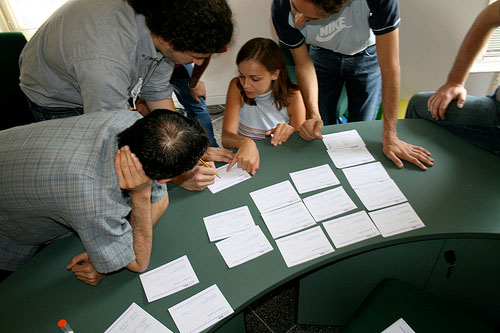Visit Audio Recordings for the audio version of this section.
LEARNING OBJECTIVES
- Identify the Project Management Institute’s definition of project management.
- Analyze and evaluate the role of client expectations in a project.
- Define project scope.
One of the priorities of the Project Management Institute (PMI) during the 1980s was to define project management and develop it as a profession. Debate continues on whether project management is a profession with an enforceable code of conduct and other traditional criteria for recognition as a profession. However, PMI’s development of A Guide to the Project Management Body of Knowledge (PMBOK), and the project management certifications that derived from these efforts, helped promote the understanding and development of the project management field. Defining project management, and substantiating it as a profession, brought about the question of its purpose. Intense discussions resulted in a compromise to define project management as “the application of knowledge, skills, tools, and techniques to project activities to meet the project requirements.”1
Be aware that PMI’s definition is not the only view of what project management entails. Jack Meredith and Samuel Mantel2 discussed project management in terms of producing project outcomes within the three objectives of cost, schedule, and specifications. According to this view, project management is the application of everything a project manager does to meet these parameters. This approach to defining project management shares PMI’s focus on the project outcomes in terms of requirements, but Meredith and Mantel also added a fourth aspect of project management—the expectations of the client.

If it is assumed that the client is the one who defines project requirements, then maybe project management is the application of knowledge, skills, tools, and techniques to meet client requirements. This definition focuses on expectations rather than project specifications. It is possible to meet all project specifications and not meet client expectations. It is also possible to only accomplish one or more of the specifications, yet still meet or exceed a client’s expectations.3
PMI’s definition of project management provides a good understanding of project management, but it does not help us understand project success. For that, we must include the client.
District Curriculum Alignment Project
Meredith and Mantel discussed a tendency noted by Russ Darnall4 that expectations often increase during the life of a project. Meredith and Mantel suggest that this is a form of scope increase. Project scope is reflected in a carefully crafted document that reflects the performance specifications of the project deliverables. Defining the project scope and managing scope change is a very different process from developing an understanding of a client’s expectations and managing those expectations. Darnall focused on defining and managing client expectations as a critical project management skill that is distinct from scope development and management.
Client expectations encompass an emotional component that includes many client desires that are not easily captured within a specification document. Although closely correlated with project specifications, client expectations are driven by different needs. It is possible for a project team to exceed every project specification and end up with an unsatisfied client.
The reverse is also true. A project can be late and over budget and the client can be satisfied. Although this may be counterintuitive, the response of a client to the events of a project is complex and goes beyond the data related in project specifications.
Volunteer Training Program
KEY TAKEAWAYS
- According to PMI, project management is the application of knowledge, skills, tools, and techniques to meet project requirements.
- The role of the client is crucial. Some experts include meeting or exceeding client expectations as a definitive element of project management.
- Project scope is a document that defines the work required to complete the project successfully.
[1] Project Management Institute, Inc., A Guide to the Project Management Body of Knowledge (PMBOK Guide), 4th ed. (Newtown Square, PA: Project Management Institute, Inc., 2008), 6.
[2] Jack R. Meredith and Samuel J. Mantel, Jr., Project Management: A Managerial Approach(Hoboken, NJ: Wiley, 2006), 8.
[3] Russell W. Darnall, The World’s Greatest Project (Newtown Square, PA: Project Management Institute, Inc., 1996), 48–54.
[4] Russell W. Darnall, The World’s Greatest Project (Newtown Square, PA: Project Management Institute, Inc., 1996), 48–54.
